Hello, everyone! We have a new article in the «Our Approach» series.
Today, we will touch upon one of the most widely discussed subjects in the Caliber community: operator balance.
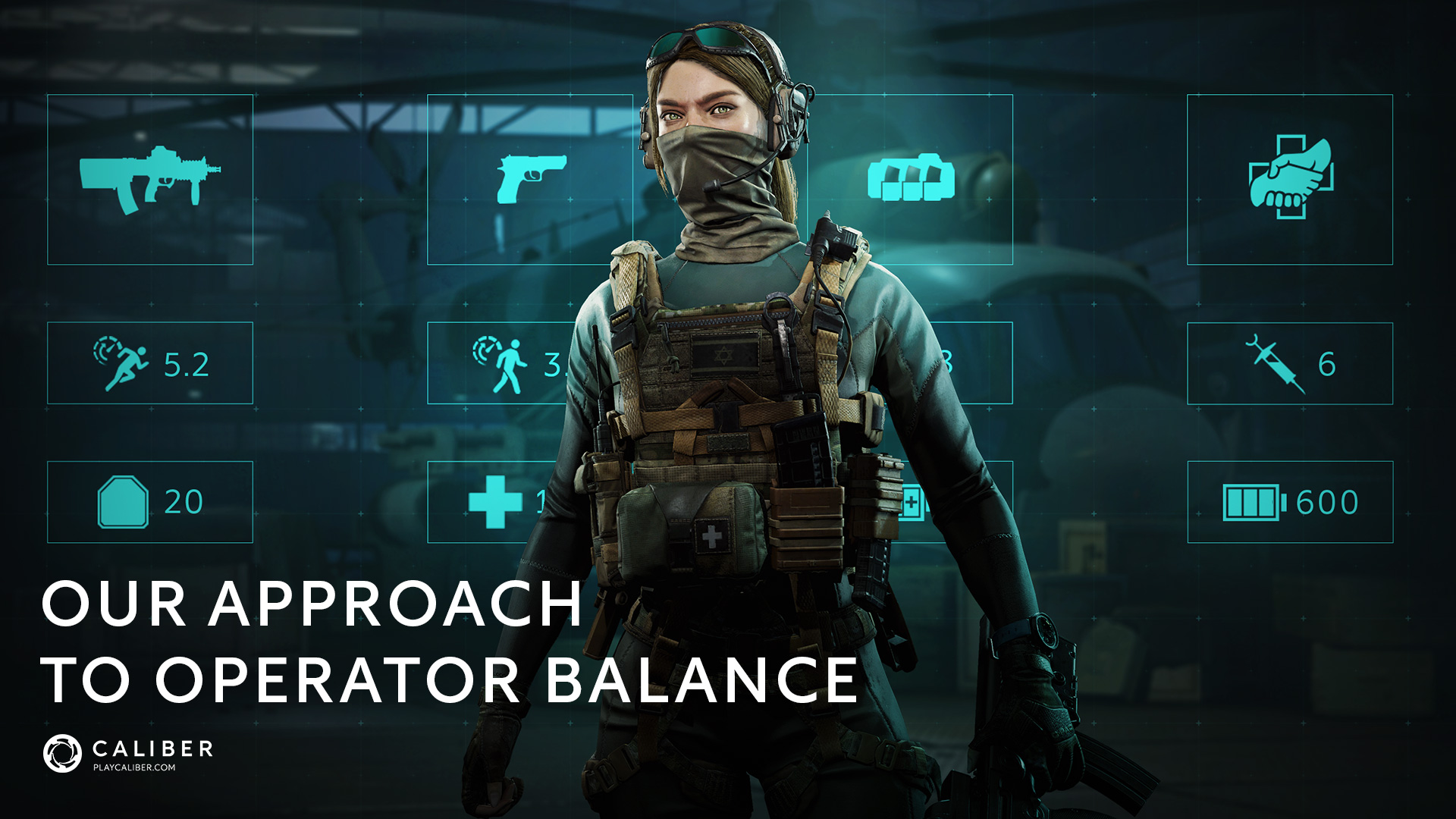
Article contents
Balance is a decisive factor in the user experience of any competitive game. When the balance is good, you may not even notice. But if it’s bad, it can cause some serious discomfort.
Balance is all about the game being fair. The outcome of a match should be determined first and foremost by the players’ skill. A player using the good old Volk should be able to contribute to their team as much as an Assault from a new collection.
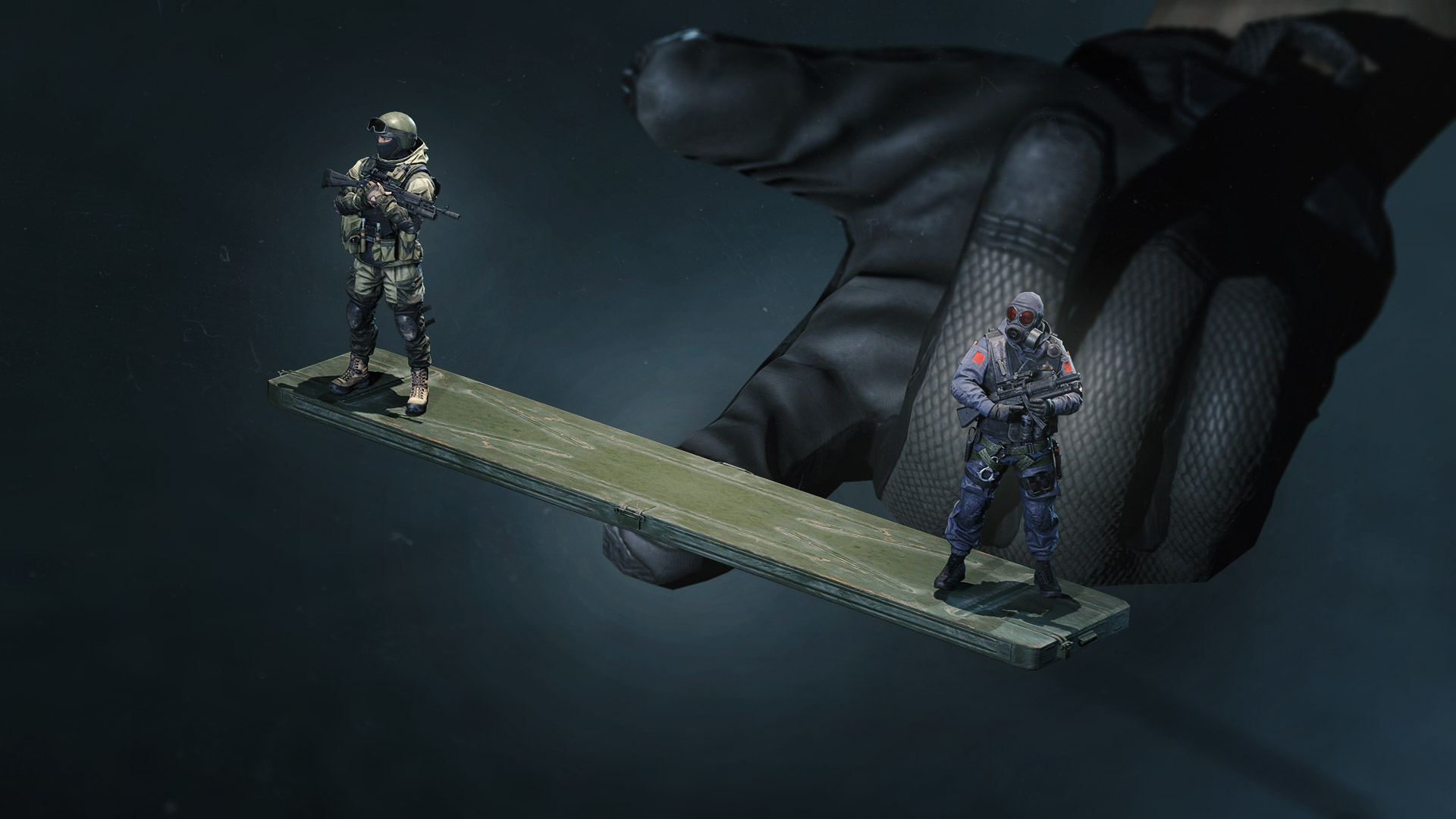
That’s exactly what we’re striving for. When creating new characters, we want to make them fun and add something unique to the game, but not make something overpowered.
When creating the design document, the game designer needs to determine the main characteristics of a new collection: equipment, abilities, and the list of upgrades.
At that point, there’s already some sort of concept for what unique traits the characters should have.

Take Marksman Avalanche, of the CST collection. While we were working on her design, she was given a Desert Eagle. Given the stats of its real-life reference, it was clear even back then that it would be a powerful weapon, but only testing could determine its power.
To pass these tests, new operators get characteristics based on the table of «Ideal class stats.» But this doesn’t apply to a minority of operators that can be considered a mix of two classes — Fortress, Strelok, Watson, Yíngzhōu, etc.
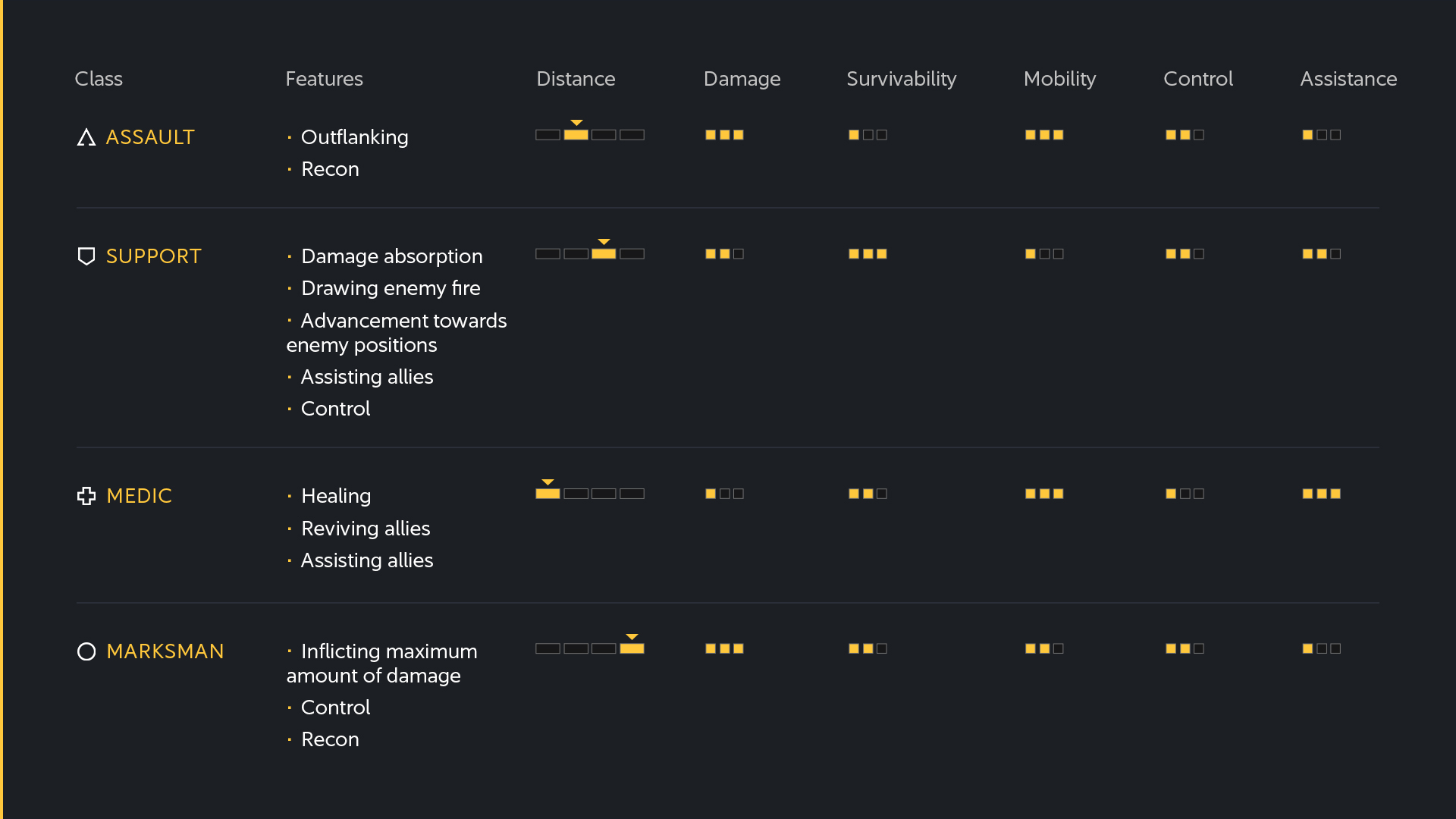
Testing allows us to determine how strong or weak the operators have ended up, whether they fulfill their original design, and whether or not the new mechanics cause any bugs.
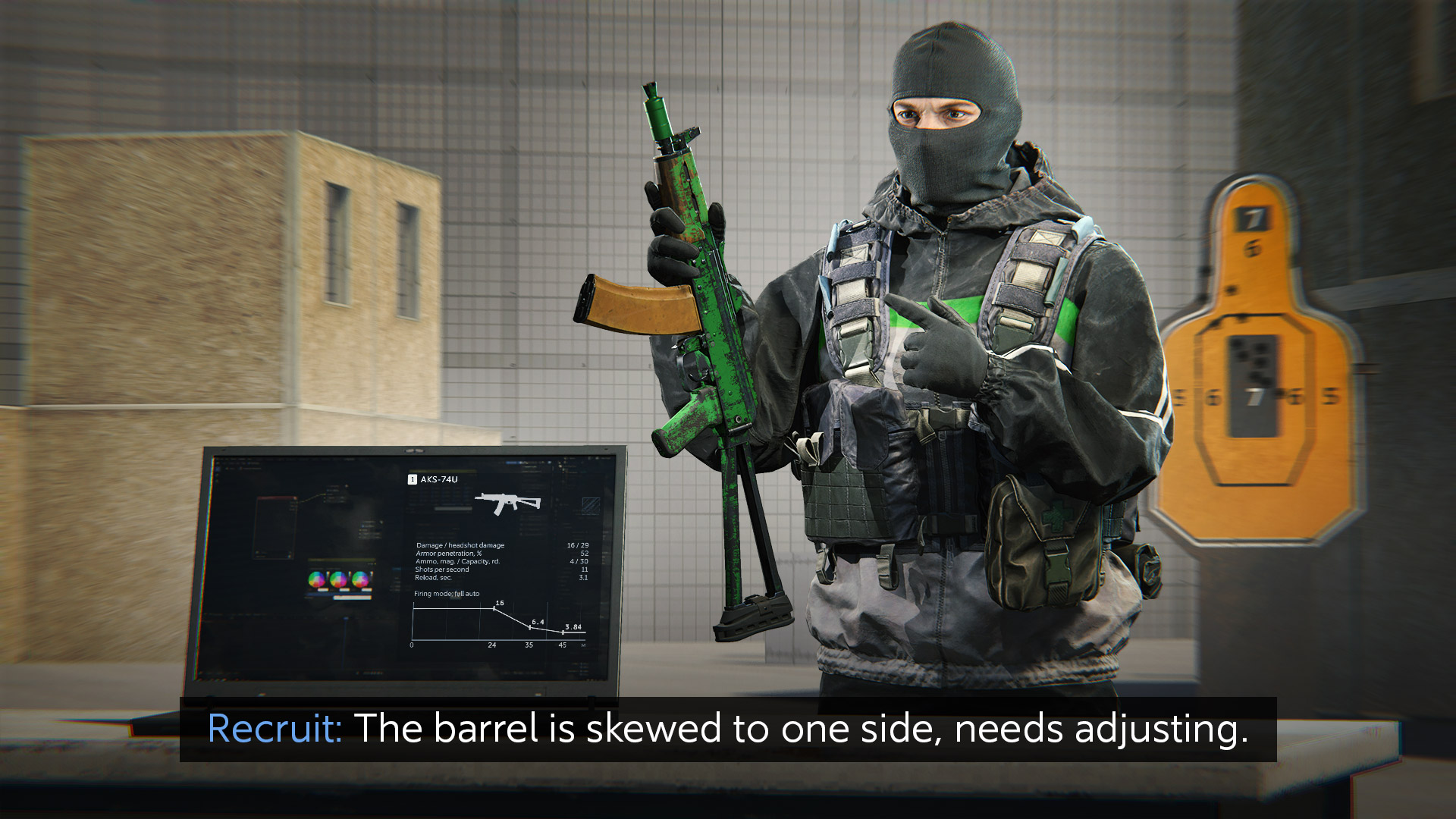
We run tests both in-house at 1C Game Studios and with Polygon combatants (thanks to all participants, you’re a huge help!), and feedback from many battles helps tweak the balance.
It should be noted that negative feedback can become positive after subsequent tests, even if we haven’t changed the new operators between runs. So we try to run the test via Polygon three to four times.
Only a handful of players can use the new operators at this stage, so we can’t always achieve perfect balance.
It’s possible to judge the new operators more objectively some time after their full release in the game client.

The most interesting part starts after the collection has been released.
Players select the new operators, then look for the best way to utilize their abilities and special gear. Sometimes they manage to find uses that land on our list of "known issues".
We quickly fix any obvious bugs that affect gameplay. A hotfix that eliminates the most critical bugs almost always follows in the wake of a new release.
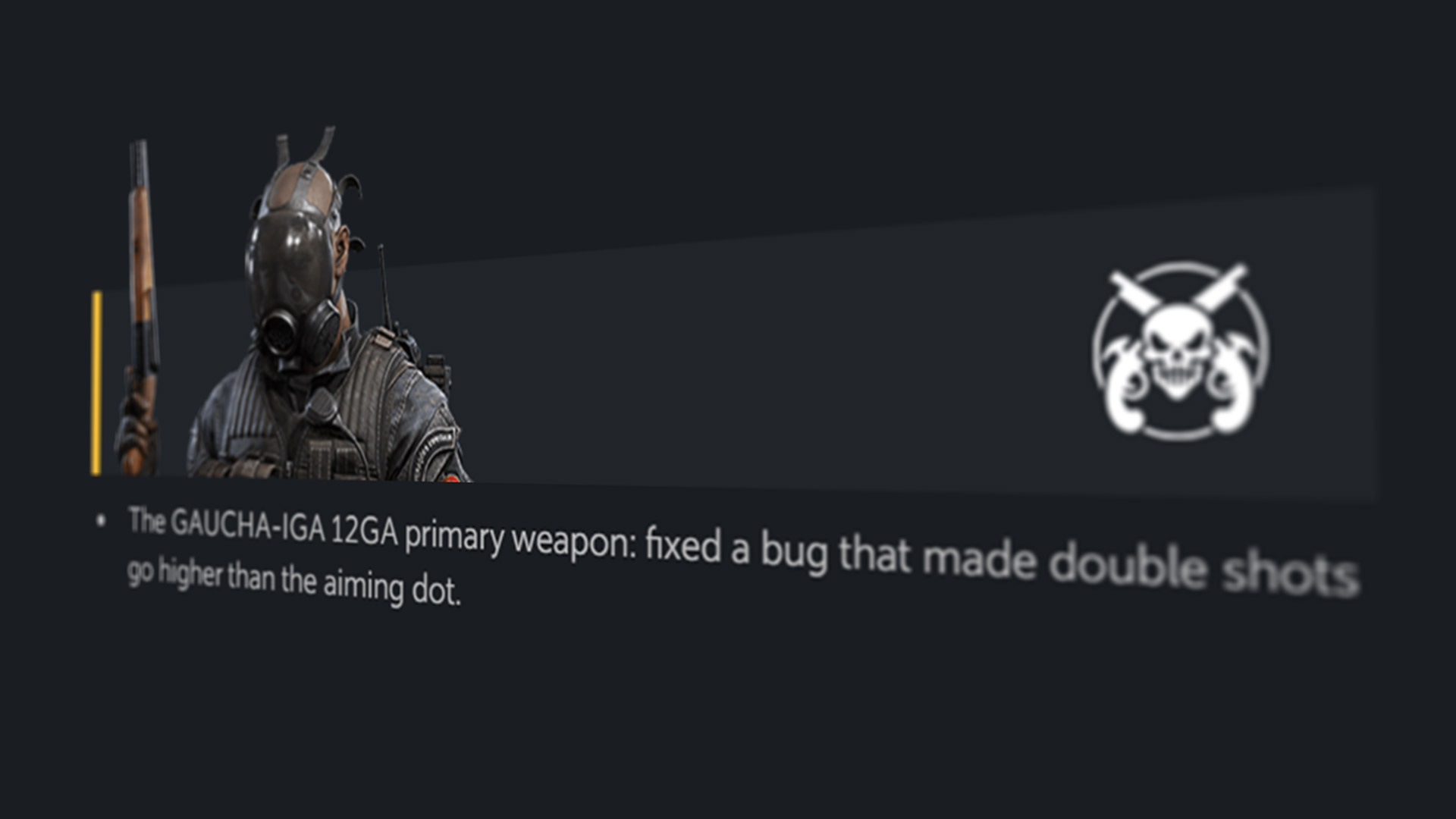
As for balance changes, they’re based on the analytical data, player reviews, and our own gameplay experience. We can only implement them after we gather enough data after some time passes.
The player base is still learning the new operators at first, so the data gathered during the first two weeks cannot be considered relevant.
To rebalance an operator is to make tweaks and changes to previously released characters. By this point, the game designer not only has test participants’ feedback, but also regular match stats, player feedback and personal impressions gathered from actual battles.
Subjective opinions and feelings aren’t enough. If you’re on a losing streak against, say, Mustang, then you’d be inclined to say that he’s overpowered. But if you look at the global player stats, Mustang would be far from the best.
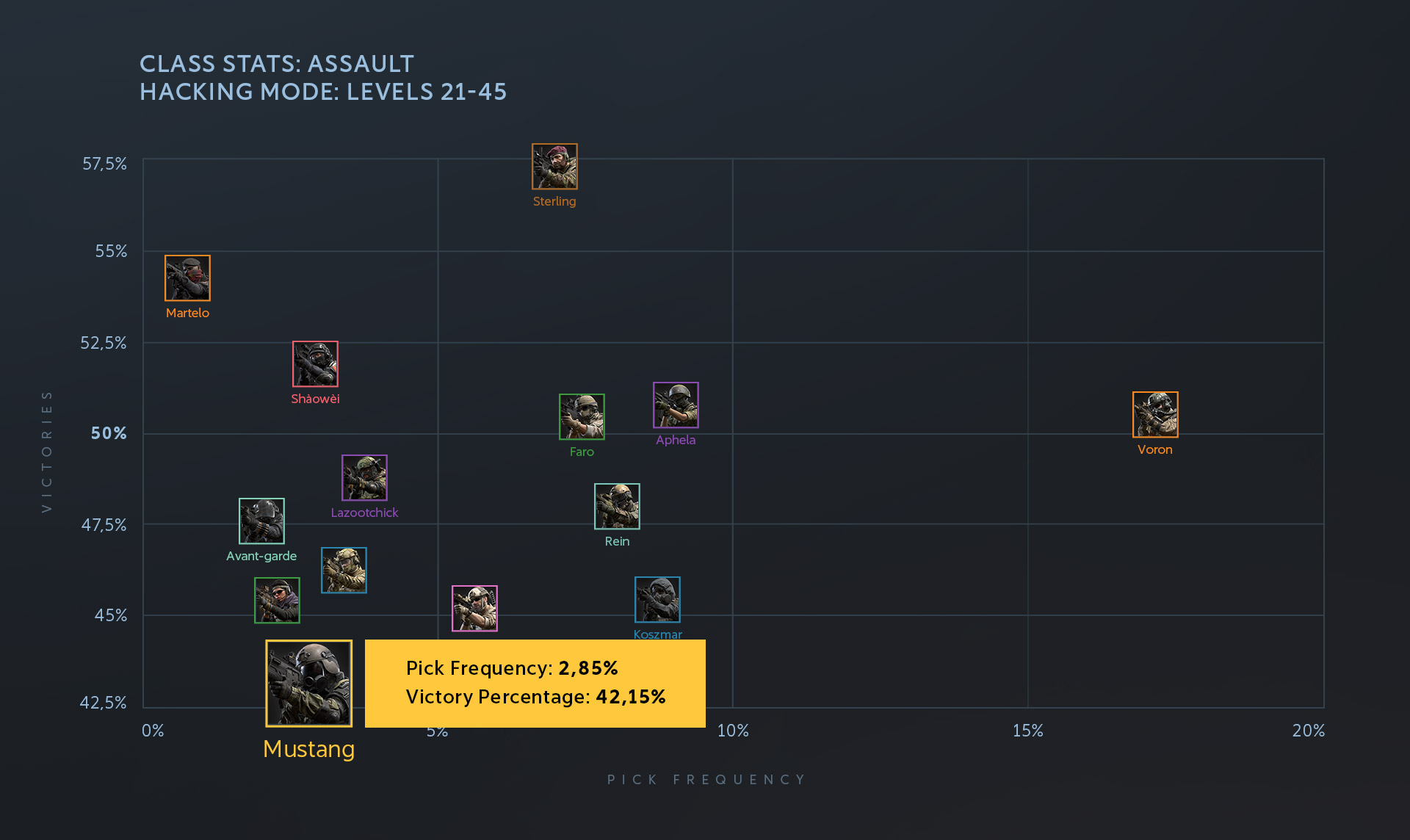
But there are some opposite cases as well. Up to version 0.22.0, Aphela seemed to be OP in both stats and in battle. We tried to weaken her in a way that wouldn’t strip her of her unique traits: we increased incoming damage while her ability is active, decreased movement speed while aiming, decreased base HP, and so on. But she was still too strong.
With active invulnerability, Aphela could easily finish off 2 or 3 of her opponents. And worst of all, this trick didn’t require a high level of skill to pull off.
Thus, we ended up disabling movement when activating her personal trait. This decision was the right one: Aphela can still fight while under the effect of Last Stand, even if rooted in place, but her enemies get a chance to hide.
Yes and no. It depends on the amount of time that has passed since an operator’s release. And it’s not just about balance changes, either.
Players have to learn to use new, unfamiliar characters with their unique skills and get used to the new mechanics, and the OP factor usually levels out when someone from the community finds an effective way to counter it.
We also always try to leave some tips in any new collection’s presentation article, in the How to Counter section.
Our latest SAS collection turned out weaker than planned, so they will get a buff soon.
The release of a new collection can influence the balance of the old ones. Operators can boost each other’s potential in different combinations. Starkaðr with Tower’s new shield is a good example of that. Such combinations are important to note.
It’s of utmost importance to look at the big picture while rebalancing. There are all kinds of players in the game: high-ranked pros, fresh recruits, and those just want to chill in the evening by playing a couple of Point Sweep matches.
We have to decide which kind of player has trouble against this or that operator before opening the config file to make changes.
For example, if only high-ranked players have problems with an operator, we try to not change the basic aspects of the character, but look at the nuances instead.

If the opposite is true, and we can see that all but the most skilled players have problems with an operator, then we may change the character’s fundamental aspects.
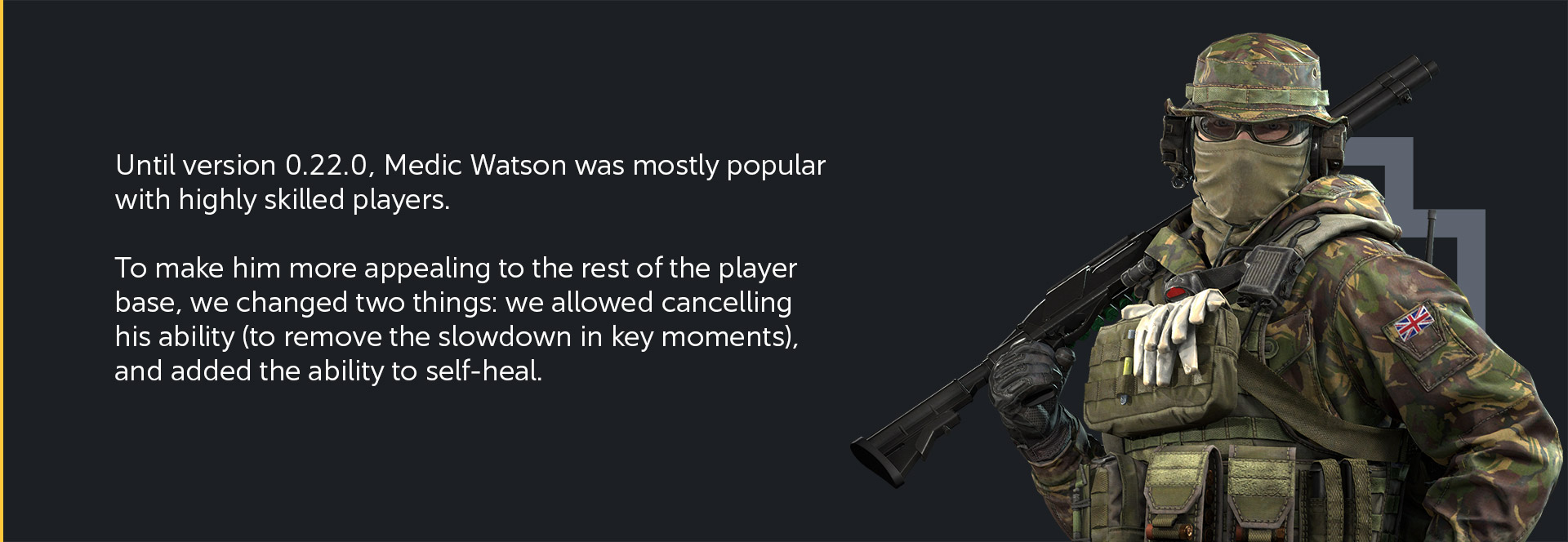
If we decide to debuff an operator’s basic aspects, then we buff them in the finer details, to maintain balance for high-level matches.

Below is a list of markers that signal to us that an operator is in need of tweaking.
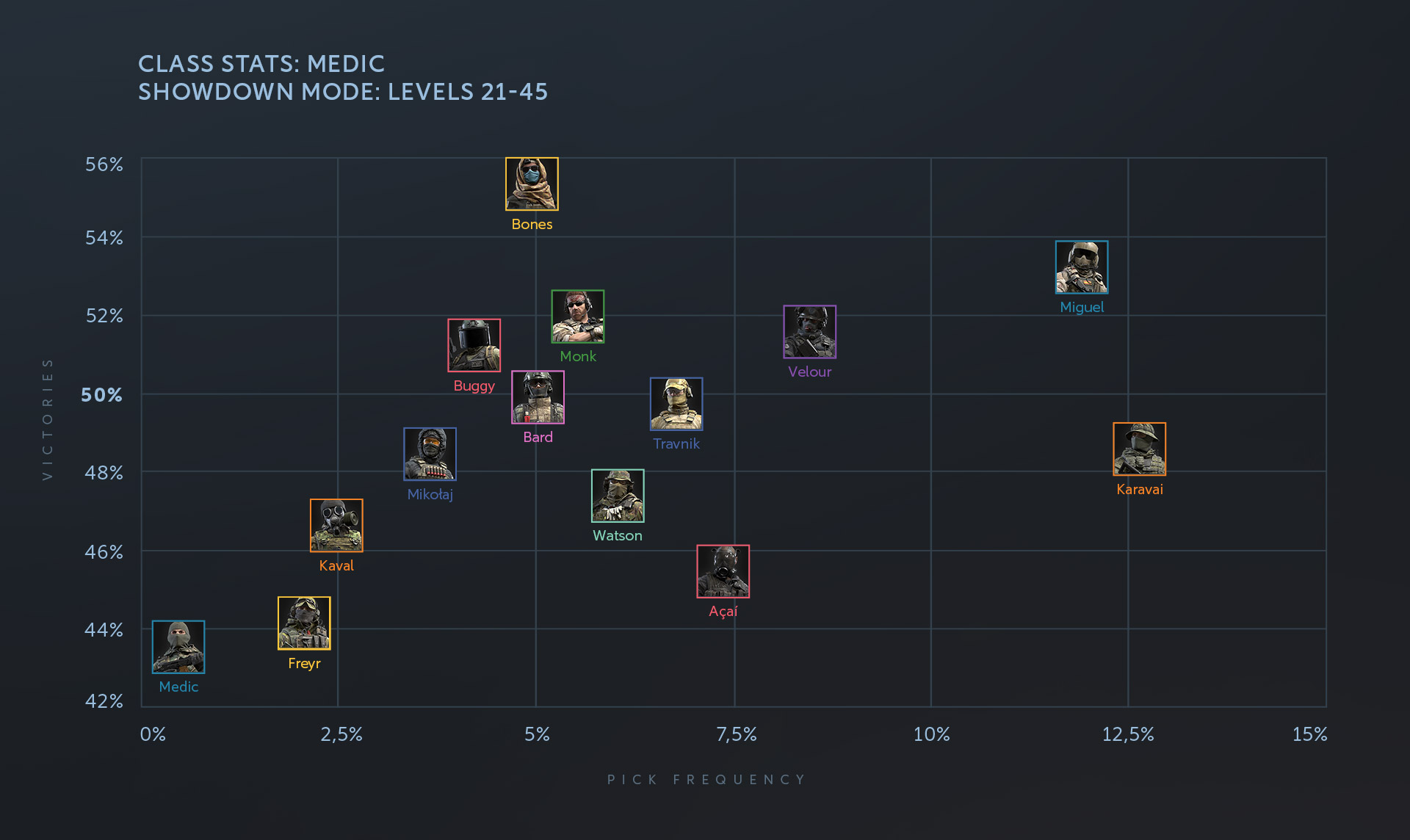
Skill balancing is similar to operator balancing, so there’s no point in repeating ourselves. But there are some important differences.
Skills don’t affect the gameplay as much as most of the other operator characteristics. Many players choose skillsets based on someone else’s advice, then forget about them for a while. Because of this, the stats may show a high win percentage for a skill that is better attributed to the player’s mastery of the game.
When designing a skill, one should think about whether that skill may become too much of an advantage for some operators.
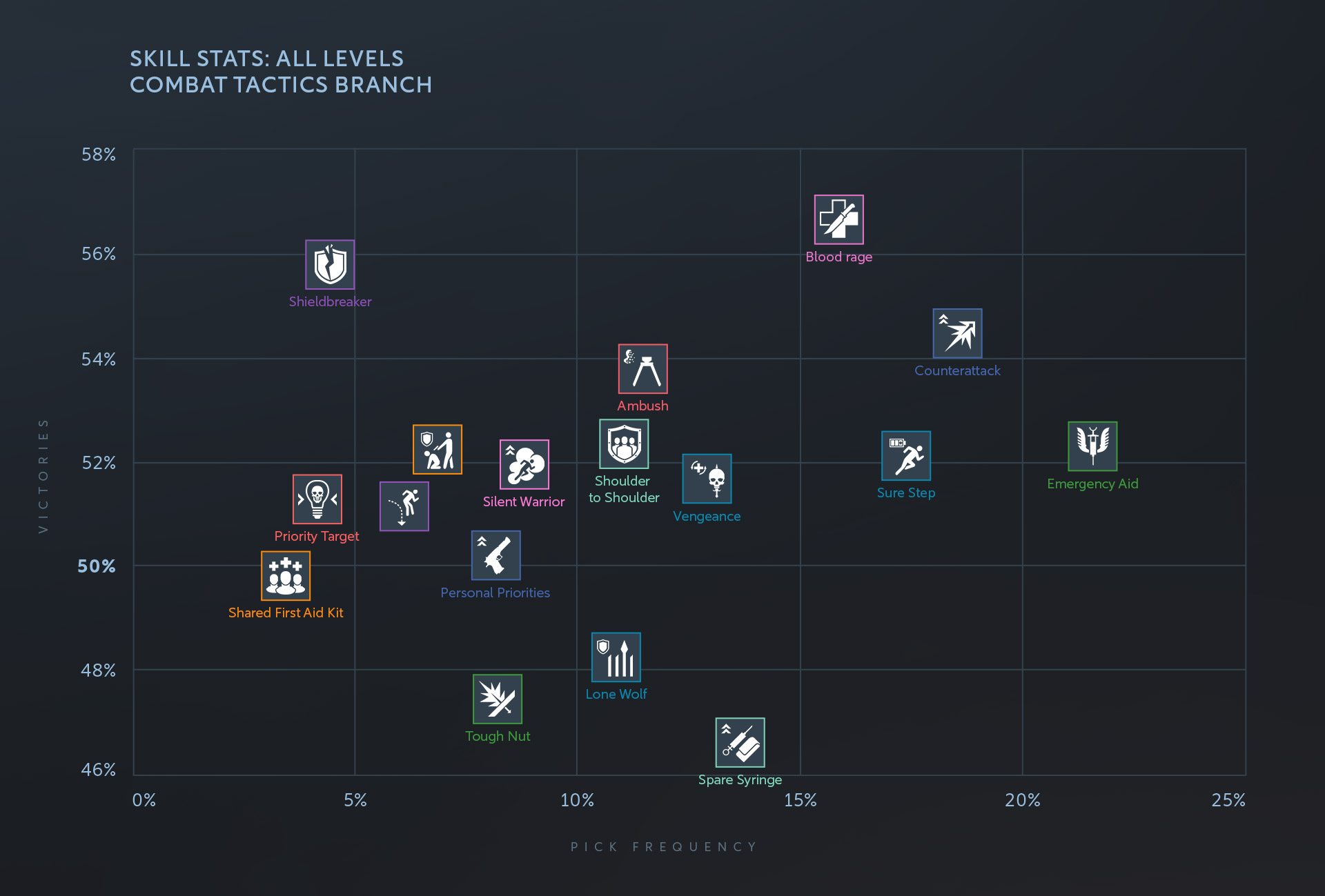
We can’t overlook the topic of game modes while discussing operator balance.
There are currently nine modes divided into three categories in Caliber: PvE, PvP, and PvPvE. To try and tweak each operator for every mode is a nigh impossible task.
We try to make each character unique. All of them have their own clearly defined strengths and weaknesses, and thus they all play differently.
And it’s completely normal when one operator shines in the PvE modes, and the other in PvP.
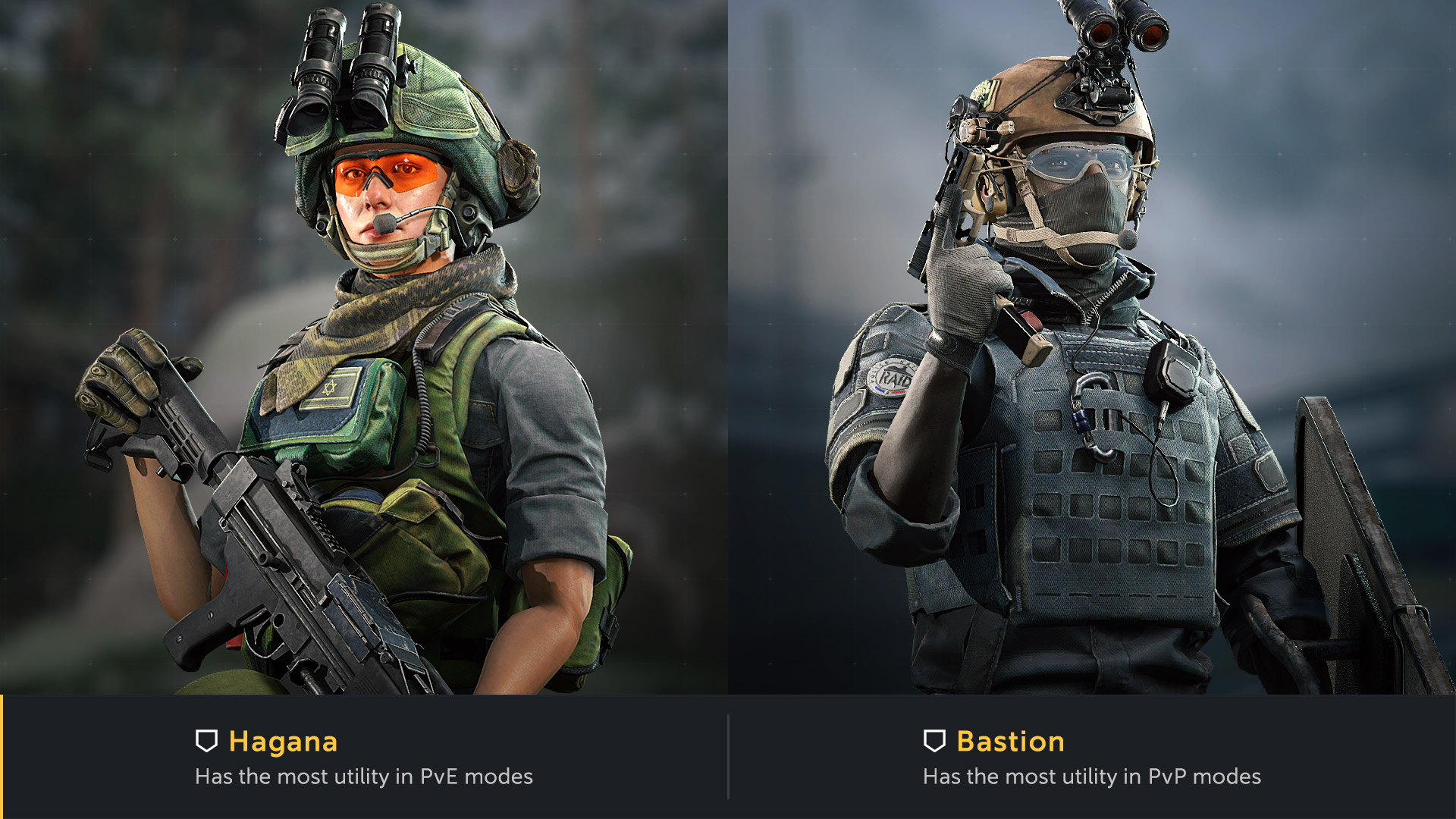
There are three modes that help us the most when rebalancing operators: Threshold, Ranked Battles, and Showdown. The balance between operators is of critical importance for these modes. If the balance for any of them is off, the outcome of a battle is no longer up to the players.
PvE modes are an entirely different matter, however. This category’s difficulty can be controlled by tweaking the bots’ balancing without affecting the operators or changing the mission’s parameters.
Pinpoint changes to operators are sometimes implemented for PvE modes as well. And, when we design new characters, we always keep in mind that some of our game’s audience will use new characters in the battles against the AI.
Take, for instance, the Chinese Marksman Cánglóng. His Concealment ability was originally designed for use in PvP modes. The cloak doesn’t completely cover the operator’s model and causes distortions while the ability is active, which allows Cánglóng’s opponents to notice him and get out of his line of fire.
But bots are not human, and they always know your position. So, we decided to give Cánglóng complete invisibility while the ability is active in PvE modes. That made him too strong: just remember when players were solo-clearing the final stage of the hardcore Onslaught Halloween event with Cánglóng alone.
We weakened that ability during one of our rounds of rebalancing, so now the bots can see Cánglóng if they get close enough to him. Thus, we preserved the usefulness of the ability, but made it more fair.
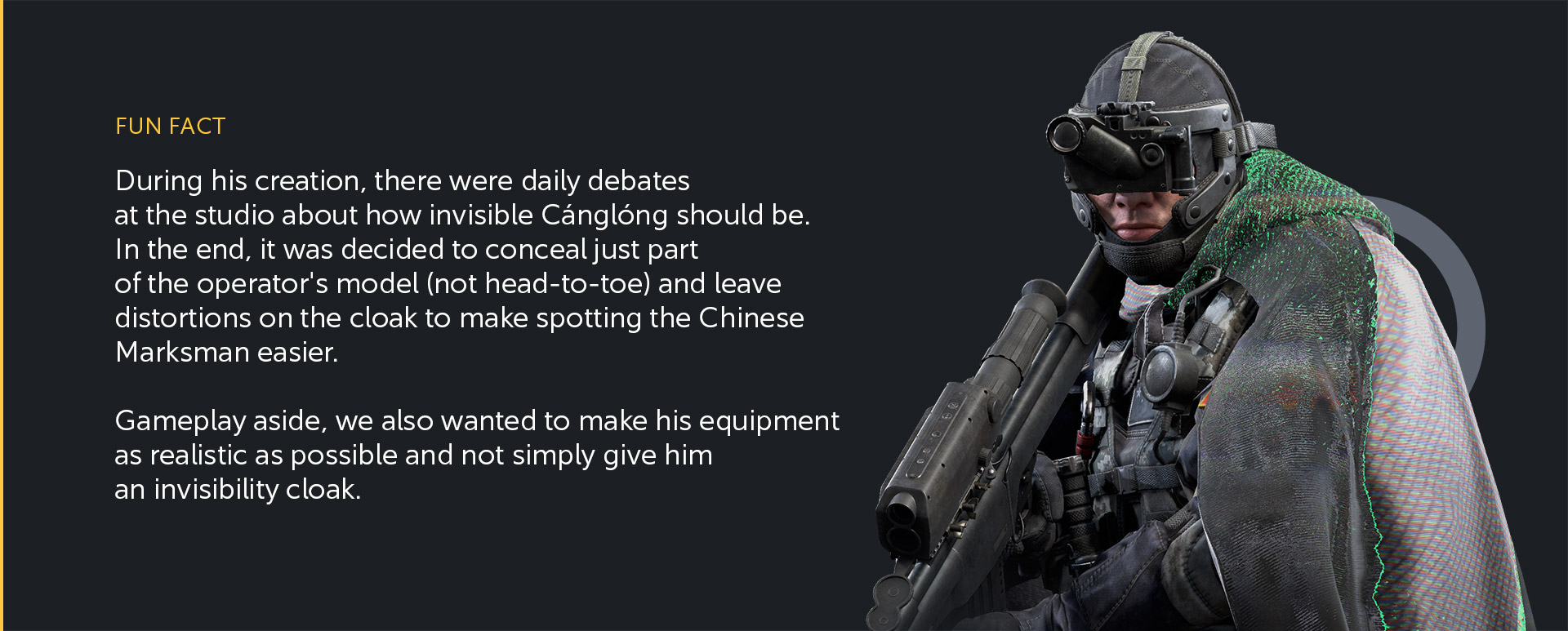
Any and all changes made to characters prompt a strong reaction from the players, which is normal for any competitive game. Meta adjustments always force players to adapt to new realities, which some players understandably struggle with.
Some view meta as the most effective way to achieve victory.
But the desired endpoint is always the same: to make the operators more balanced so there are as few OP characters as possible, and to encourage players to experiment with different characters.
New operators and mechanics will keep appearing in the game. Which means that balance changes will remain a constant and ever-important process.
Please share your feedback, as it influences our decisions. Even this article was written in response to a request from a player in our Discord channel.